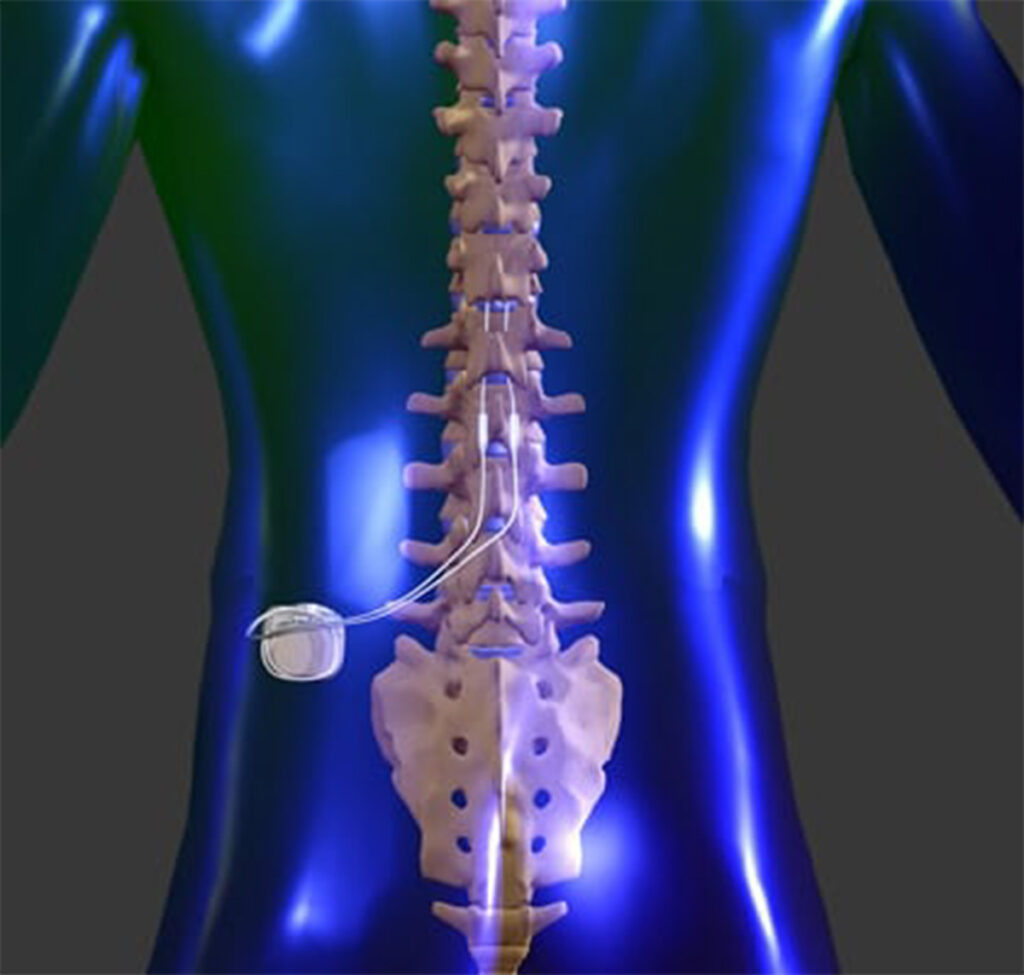Spinal Cord Stimulation
Spinal cord stimulation offers a modern approach to chronic pain management by targeting the nervous system directly. This treatment is designed to help patients regain control over their lives by reducing pain that hasn’t responded to medication, physical therapy, or surgery. It’s particularly helpful for individuals who want to minimize their reliance on opioids or other long-term pain medications.
This therapy provides flexibility and customization—patients can adjust the stimulation settings based on their pain levels and activities. With the ability to trial the device before permanent implantation, spinal cord stimulation offers both effectiveness and peace of mind for those seeking long-term relief.

What is it?
Spinal cord stimulation is an advanced pain management therapy that uses electrical impulses to interrupt pain signals before they reach the brain. It’s effective for various chronic pain conditions, including failed back surgery syndrome and complex regional pain syndrome.
How is it performed?
The procedure is done in two stages: a trial period (5-7 days) and, if successful, permanent implantation. Under fluoroscopic guidance, small leads are placed in the epidural space. The procedure takes 1-2 hours.
Technology Partners:
Abbott’s Eterna & Proclaim; Boston Scientific, Medtronic’s Inceptiv, Intellis, Vanta, Nevro’s HFX, Suladu’s Evoke
Treatment Benefits
Spinal cord stimulators are known for their ability to significantly reduce chronic pain, particularly in the lower back, legs, and arms. Unlike traditional treatments that may simply mask pain, this therapy interrupts pain signals at the source. Additional benefits include improved mobility, enhanced sleep, and a reduced need for pain medications, all of which can contribute to a better quality of life.
Treatment Benefits
Spinal cord stimulators are known for their ability to significantly reduce chronic pain, particularly in the lower back, legs, and arms. Unlike traditional treatments that may simply mask pain, this therapy interrupts pain signals at the source. Additional benefits include improved mobility, enhanced sleep, and a reduced need for pain medications, all of which can contribute to a better quality of life.
Learn more about Spinal Cord Pain Relief Stimulators by contacting the Minimally Invasive Spine and Pain Institute—our team is here to help you explore your options.
Aftercare for Spinal Cord Pain Relief Stimulation
Following spinal cord stimulator placement, you may experience mild soreness or swelling around the lead insertion site. This is a normal part of the healing process and should subside within a few days. Whether you’re in the trial phase or have received a permanent implant, it’s important to limit physical activity to avoid lead movement and allow the device to settle properly. Your care team will provide detailed guidance on how to care for the implant site and manage your recovery at home.
Tips for a Smooth Recovery
Follow these guidelines to support healing after spinal cord pain relief simulator placement:
Avoid bending, twisting, or lifting objects heavier than 10 pounds for the first week
Keep the incision site clean and dry to prevent infection
Use over-the-counter or prescribed medications to manage discomfort as needed
Avoid submerging the area in water (baths, pools, hot tubs) until cleared by your provider
Monitor for signs of infection, including redness, swelling, or unusual drainage

